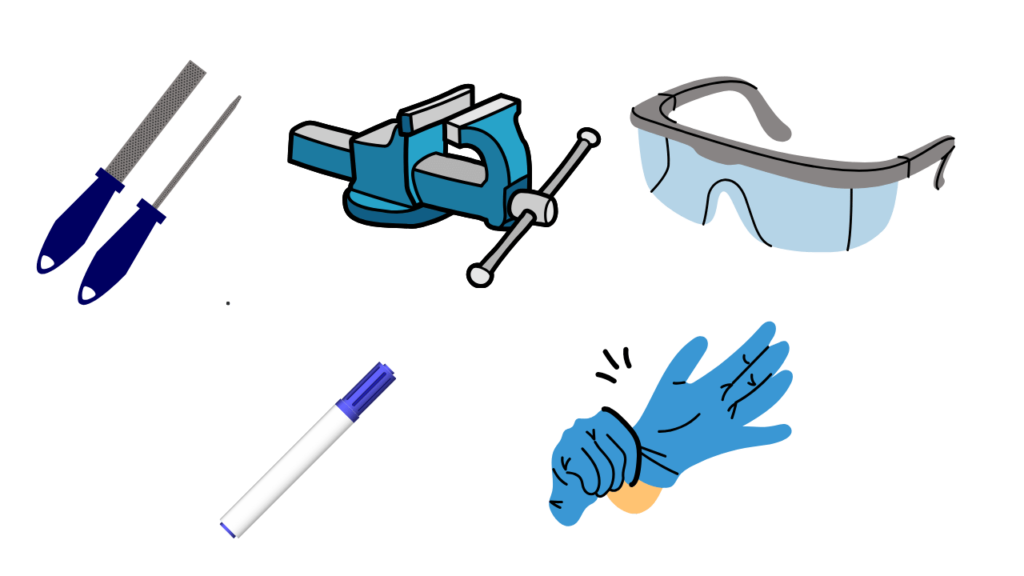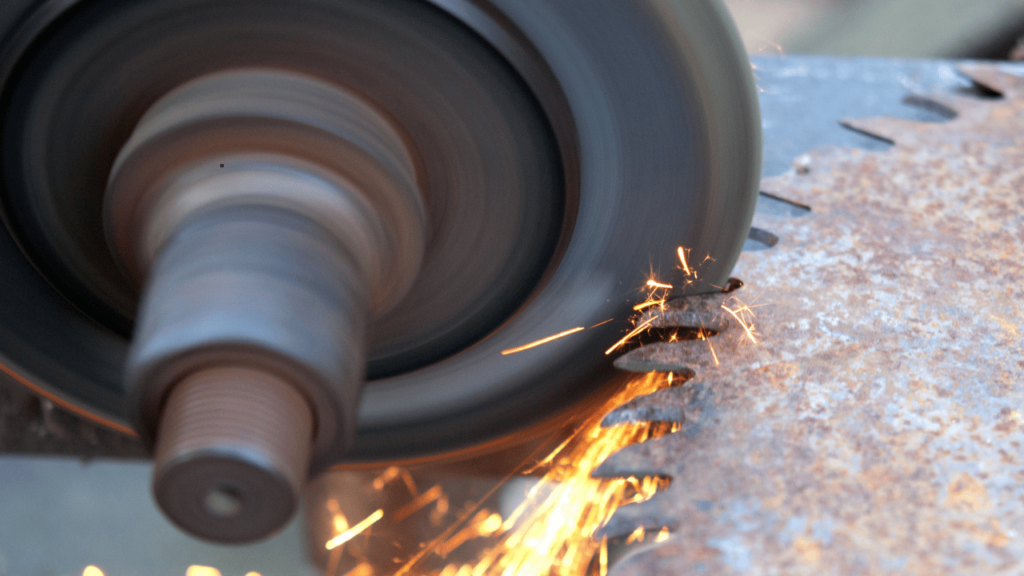Have you ever been cutting wood, and your saw starts to struggle? I’ve had that happen before. A dull blade slows you down and makes rough cuts. It can even damage your saw. But don’t worry—sharpening your circular saw blade at home is easy.
Many people think sharpening is hard or needs expensive tools. But I can tell you from experience that it’s simple to do yourself. Sharpening your blade saves money and keeps your saw working well.
In this guide, I’ll show you how to sharpen your blade step by step. You don’t need fancy tools—just a few things you probably have. I’ll also help you avoid mistakes that could make it more complicated.
Ready to bring your blade back to life? Let’s dive in!
Tools and Materials You’ll Need
Before sharpening your circular saw blade, gather these essential tools and materials. Don’t worry if you don’t have specialized equipment—there are budget-friendly alternatives.

Basic Tools and Materials
- Sharpening File: A metal file is key for sharpening the teeth. Look for a small, flat file for precise work.
- Vise: Use a vise to hold the blade steady while you work. If you don’t have one, you can secure the blade on a sturdy surface with clamps.
- Marker: A simple marker helps you keep track of your starting point.
- Safety Goggles: Protect your eyes from metal shavings. You can find affordable goggles at most hardware stores.
- Gloves: Wear gloves to prevent cuts and improve your grip on the blade.
Budget-Friendly or Household Alternatives
- Instead of a specialized sharpening file, a small triangular file from an essential toolkit can work.
- If you don’t own a vise, you can keep the blade from moving by using two heavy books or bricks.
- Borrow safety gear from your workshop or a friend instead of buying new items.
Step-by-Step Process
Sharpening a circular saw blade at home may sound tricky, but with the proper steps, it’s straightforward. Follow these easy instructions to bring your blade back to life.
- Remove the Blade from the Saw
- Unplug the saw or remove the battery to ensure safety.
- Use a wrench to loosen the blade nut, then carefully remove the blade.
- Secure the Blade in a Vise
- Place the blade in a vise to keep it steady.
- Ensure the teeth are easily accessible and the blade won’t shift while you work.
- Mark the Starting Tooth
- Use a marker to highlight the first tooth you’ll sharpen. This prevents you from losing track as you work.
- Sharpen the First Tooth
- Hold a sharpening file at the same angle as the tooth’s bevel (usually marked on the blade).
- File gently in one direction, applying consistent pressure.
- Repeat for All Teeth
- Move to the next tooth and repeat the same process.
- Ensure you maintain the same angle and pressure on every tooth for balanced sharpening.
- Reattach the Blade
- Once all teeth are sharpened, remove the blade from the vise.
- Reattach it to the saw, tightening the blade nut securely.
- Test the Blade
- Run the saw on a scrap piece of wood to check its performance. If the cut is smooth and clean, your sharpening was a success!
Following these steps will quickly restore your blade’s sharpness and improve your saw’s performance.
Common Mistakes Beginners Make and How to Avoid Them

Sharpening a circular saw blade can seem simple, but beginners often encounter a few common problems. Here’s what to watch for and how to do it right.
Common Mistakes
- Uneven Sharpening
- Filing some teeth more than others can result in an unbalanced blade. This can affect how the saw cuts and cause vibrations.
- Incorrect Angle
- Filing at the wrong angle reduces the blade’s efficiency. It can make the saw cut slower or damage your working material.
- Over-Sharpening
- Pressing too hard or filing too much can wear down the teeth. This may shorten the blade’s lifespan or weaken its cutting edge.
How to Avoid These Mistakes
- Use a Guide for Consistency
- A protractor or angle guide can help maintain the correct bevel angle on every tooth.
- File Gently
- Apply light, steady strokes when sharpening. Let the file do the work instead of forcing it.
- Inspect the Blade Regularly
- Check the blade before and after sharpening. Look for even tooth length and proper angles. This ensures the blade stays balanced.
Remembering these tips, you can avoid common pitfalls and sharpen your blade like a pro.
Wrap-Up: Extra Tips to Make Your Work Easier
As you finish sharpening your circular saw blade, here are some final tips to keep you safe and your blade in excellent condition.
Safety Reminders
- Always wear gloves to protect your hands from sharp teeth.
- Use safety goggles to shield your eyes from metal filings.
- Work in a well-lit area to see clearly and avoid accidents.
Maintenance Tips
- Clean your blade after every use to remove pitch, sap, and debris that can dull the teeth.
- Avoid cutting through nails, screws, or other hard materials that can damage the edge.
- Store your blade in a dry place to prevent rust and corrosion.
Share Your Thoughts
What was your experience sharpening your blade? Did these tips work for you? Share your questions, feedback, or success stories in the comments. Your input could help others improve their skills, and you could inspire a future post!
Following these extra steps will give you a sharp blade and a safer and more enjoyable sawing experience. Keep up the great work!

